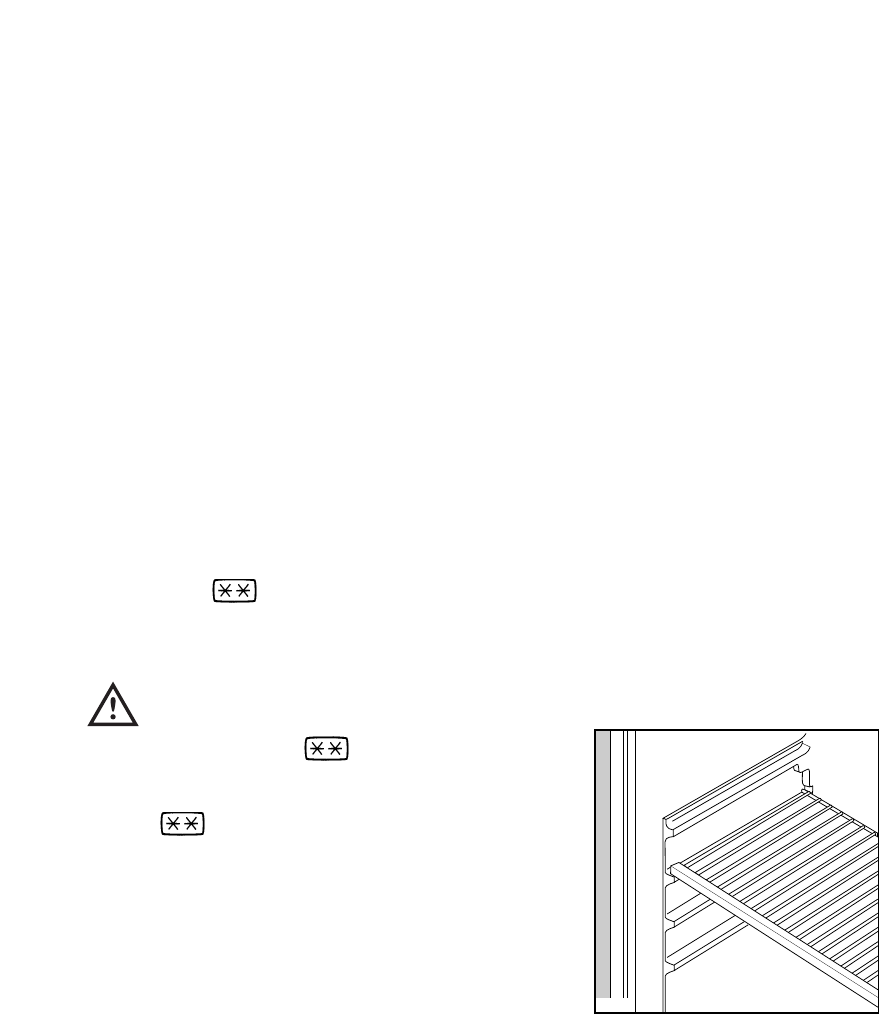
Thawing
Food can be thawed in a number of ways, depending
on the type of food and the size of the packs.
Meat, fish and fruit should be thawed in the
refrigeration compartment and small pieces of meat
can even be cooked while still frozen, but you must
ensure that it is thoroughly cooked through.
Vegetables should be directly immersed in boiling
water; ready-cooked dishes can be placed directly in
the oven in their aluminium wrapping.
A microwave oven is particularly suitable for thawing
any type of frozen or deep-frozen food: follow the
oven instructions, particularly regarding the
placement of aluminium wrapping in the oven.
Making ice cubes
The appliance is provided with a plastic ice cube tray.
Fill the tray 3/4 full to allow the ice to expand and
place it in the -star compartment. To turn out
the ice cubes simply give the tray a slight twist to
release the cubes.
Important
Do not consume ice-lollies which have just
come out of the -star compartment.
Their extremely low temperature can cause
frost burns. Do not remove items from the
-star compartment if your hands are
damp/wet, as this could cause skin abra
sions or "frost/freezer burns".
Normal Operating Sounds
You may hear faint gurgling or bubbling sounds when
the refrigerant is pumped through the coils or tubing
at the rear, to the cooling evaporator.
When the compressor is on, the refrigerant is being
pumped round, and you will hear a whirring sound or
pulsating noise from the compressor.
A thermostat controls the compressor, and you will
hear a faint ‘click’ when the thermostat cuts in and
out.
Fresh food refrigeration
To obtain the best performance, do not store warm
food or evaporating liquids in the refrigerator; do
cover or wrap the food, particularly if it has a strong
flavour.
Do not cover the shelves with any protective
material, such as paper, cardboard or plastic, which
may obstruct the air circulation through them.
To help you use your refrigerator correctly, here are
some more useful hints:
Raw meat (beef, pork, lamb & wild fowl): wrap in
polythene bags and place on top of the salad drawer.
Meat can only be stored safely in this way for one
or two days at the most.
Fruit & vegetables: these should be thoroughly
cleaned and placed in the bottom salad crisper.
Butter & cheese: these should be placed in special
airtight containers or wrapped in aluminium foil or
polythene bags to exclude as much air as possible.
Milk bottles: these should have a cap and should be
stored in the bottle rack on the door.
The walls of the refrigerator are equipped with
runners so that shelves can be positioned as desired.
D040
6


















